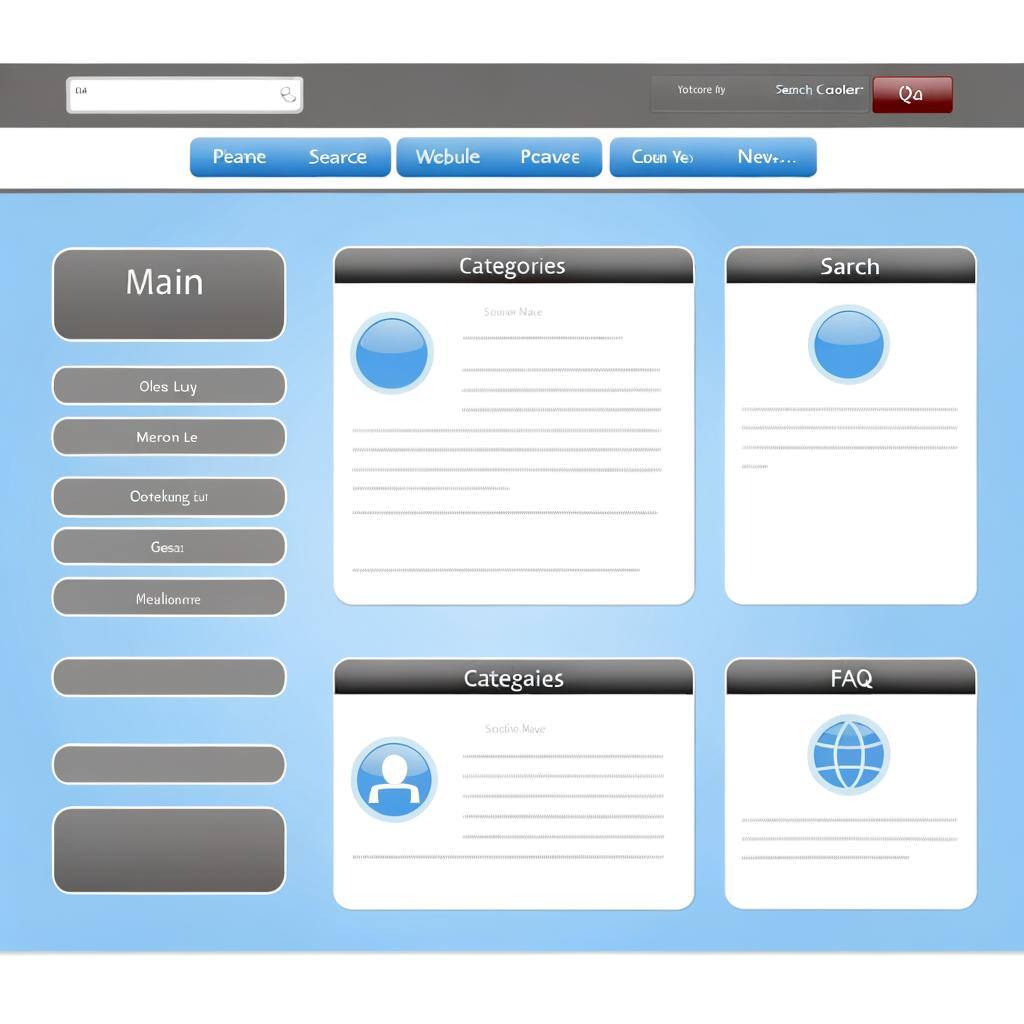Building a User-Friendly Website: Essential Strategies for Your Online Business

Your website is your online storefront, your 24/7 salesperson, and your first impression. A poorly designed website can cost you customers and revenue, while a user-friendly one can boost your business to new heights. But what exactly makes a website "user-friendly"?
In this comprehensive article, we'll discuss the essential strategies for building a website that attracts visitors and keeps them coming back for more. From understanding your audience to optimizing speed and performance, we'll cover it all.
Understanding Your Target Audience and Goals
Before you lay a single pixel on your website design, you need to understand who you're designing for. Your target audience isn't just a demographic; it's a group of people with unique needs, preferences, and pain points. By defining your target audience, you can tailor your website's content, design, and functionality to speak directly to them.
Start by creating user personas – fictional representations of your ideal customers. Consider their age, gender, interests, occupation, income level, and online behavior. What problems are they trying to solve? What information are they seeking? What motivates them to make a purchase?
Equally important is defining your website's goals. Are you aiming to increase brand awareness, generate leads, sell products, or provide customer support? Your goals will shape every aspect of your website, from the layout to the call-to-action buttons.
Compelling Website that Engages and Converts
Your website's content is its heart and soul. It's what draws visitors in, keeps them engaged, and convinces them to take action.
Whether it's a blog post, product description, or landing page, your content needs to be informative, engaging, and relevant to your target audience.
Clear and Compelling Content
Write in a conversational style that speaks directly to your readers, as if you're having a friendly chat over coffee. Avoid jargon and technical terms that might confuse them, opting for clear, concise language that's easy to understand. Break up long paragraphs into shorter, more digestible chunks, making your content visually appealing and easy to scan.
Keyword Optimization for Better Visibility
To make sure your content gets found by the right people, incorporate relevant keywords and their variations, also known as keyword stemming, into your writing. For instance, if you're writing about "healthy recipes," also include terms like "healthy cooking" or "health food recipes." This helps search engines understand what your content is about and show it to users who are searching for similar topics.
Visual Storytelling
Don't underestimate the power of visuals to capture attention and convey information quickly. Images, infographics, and videos can enhance your content, making it more engaging and memorable. A well-placed image can break up text, illustrate a point, or evoke an emotional response, leaving a lasting impression on your visitors.
Calls to Actions That Guide Users
Every piece of content should have a clear purpose. What do you want your readers to do after consuming your content? Whether it's signing up for a newsletter, downloading a whitepaper, or making a purchase, guide them with clear, compelling calls to action. These CTAs should be strategically placed throughout your content and visually distinct to encourage clicks and conversions.
Link Building for Increased Authority
Building backlinks from other reputable websites to your own is like earning a vote of confidence from your peers. While some backlinks can be acquired organically, a well-rounded link-building strategy often requires the expertise of professional link building services who understand the nuances of ethical and effective link acquisition. This signals to search engines that your content is valuable and trustworthy. This further boosts your website's visibility and credibility in the eyes of both search engines and potential customers.
Mobile Optimization: The Must-Have for Today's Users
In an era where smartphones are practically glued to our hands, ignoring mobile optimization is a recipe for disaster. Your website needs to cater to users on the go, ensuring a seamless experience regardless of screen size.
Here's why mobile optimization is important:
- The Majority Rules: More than half of all web traffic now comes from mobile devices. If your site isn't mobile-friendly, you're alienating a massive chunk of potential customers.
- Google's Mobile-First Indexing: Google predominantly uses the mobile version of your site for indexing and ranking. This means a poor mobile experience can directly hurt your visibility in search results.
- User Experience is King: Mobile users expect fast loading times, easy navigation, and content that's formatted for smaller screens. A clunky mobile experience can lead to high bounce rates and lost opportunities.
Making Your Website Mobile-Friendly
As about half the traffic comes from mobile devices, as discussed above, not optimizing for it can be a big loss. To make your website mobile-friendly, follow these tips:
- Responsive Design: This approach ensures your website automatically adapts to different screen sizes, providing an optimal viewing experience on any device.
- Streamlined Content: Keep your mobile content concise and focused. Avoid excessive text and large images that can slow down loading times.
- Easy Navigation: Use a simple menu structure with large buttons that are easy to tap with a finger.
- Fast Loading Times: Optimize images, minimize code, and use a reliable hosting provider to ensure your website loads quickly on mobile networks.
Optimizing Website Speed and Performance
A slow-loading website can frustrate visitors and drive them away before they even have a chance to explore your offerings. Studies show that even a one-second delay in page loading can lead to a significant drop in conversions. Optimizing your website's speed and performance is non-negotiable to keep users engaged and improve your search engine rankings.
Prioritize compressing images and minimizing code to reduce file sizes. Leverage browser caching to store frequently accessed data locally, speeding up subsequent visits. Choosing a reliable hosting provider with adequate resources can also significantly impact your website's speed and uptime. Regularly monitor your website's performance using tools like Google PageSpeed Insights to identify and address any bottlenecks.
Conclusion
A user-friendly website is essential for online success. By understanding your audience, prioritizing navigation and design, embracing mobile optimization, crafting compelling content, and optimizing speed, you'll create a website that attracts, engages, and converts visitors into loyal customers.
It's an ongoing process, but the rewards – increased traffic, higher engagement, and more revenue – are well worth the effort. So, invest in your website's user experience and watch your online business thrive.
Related Posts
Join the movement.
Your Entourage journey starts here. Join Australia's largest community of over 500,000 business owners and entrepreneurs, and receive instant access to exclusive content and updates delivered straight to your inbox.




